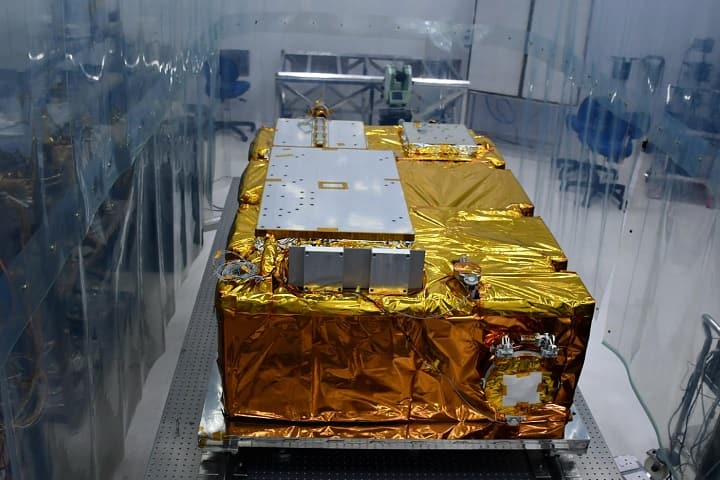



In early 2022, a geomagnetic storm triggered by a coronal mass ejection from the sun knocked out 40 of the 49 SpaceX Starlink satellites. These gigantic explosions on the sun emit vast amounts of energy that can affect radio transmissions and GPS coordinates on earth, 150 million km away.
It is these mass ejections that the primary payload of the Indian Space Research Organisation's upcoming mission Aditya-L1 is set to study. The payload called Visible Emission Line Coronagraph (VELC) was developed by the Indian Institute of Astrophysics (IIA) in Bengaluru.
"Depending on the intensity of solar mass that is ejected during a CME, space weather gets affected,” IIA director Annapurni Subramaniam told Moneycontrol. "The question is how much does the sun affect things in space because we are more and more dependent on space technology such as GPS, mobile connectivity and so on."
Aditya-L1 is retrofitted with seven payloads, including the one by IIA, and is scheduled to be launched from Sriharikota aboard the PSLV-C57 rocket on September 2. This mission comes on the heels of ISRO's historic landing of Chandrayaan-3 near the moon's South Pole on August 24.
Need for solar missions"You must have seen Starlink satellites getting disrupted… This is happening because the sun is becoming active now. So such things can happen and it is not a futuristic prospect," Subramaniam said.
What Subramaniam, who began her career at IIA as a research fellow back in the 90s, means by the sun becoming “active" is a reference to solar cycles. The sun has an 11-year cycle during which it goes from being hyperactive to dormant. The next peak activity phase is predicted to happen around 2025.
Scientists and governments globally have been keeping an eye on this because peak solar activity can impact power grids and communication systems. Other solar missions include the National Aeronautics and Space Administration’s Parker Solar Probe, which flew through the sun's corona and sampled particles and magnetic fields in 2021. The European Space Agency's Solar Orbiter is also looping around the sun.
What will VELC do?The sun's atmosphere has three parts – the photosphere, which is the surface layer, the solar atmosphere, which includes the chromosphere, and the corona. VELC will study the corona, the outermost part of the sun's atmosphere.
"If you look at the sun on any normal day, you can't see the corona. You can only see the corona during a total solar eclipse," Subramaniam said.
Here is where a coronagraph will come in handy: A coronagraph can recreate a total solar eclipse within the instrument with the help of 40 optical elements.
"You have to block the disk of the sun. However, you cannot do it unless and until the moon comes in between. So you have to artificially create a block inside the instrument to create a total solar eclipse," she said.
 The Visible Emission Line Corona graph (VELC) payload developed by Indian Institute of Astrophysics | Source: IIA
The Visible Emission Line Corona graph (VELC) payload developed by Indian Institute of Astrophysics | Source: IIAThe payload will then trace the speed at which mass emissions are ejected from the sun. Apart from recreating a perfect solar eclipse within the instrument, there is also the challenge of managing the heat generated when the optical devices focus on the sun.
"It is a very complex instrument, it is very difficult to design, develop and integrate," Subramaniam said.
The timelineThe five other payloads will study the photosphere and chromosphere, X-ray flares, solar winds, and interplanetary magnetic fields.
After lifting off, Aditya-L1 will take 3-4 months to reach Lagrange Point 1 (L1), which is 1.5 million km from Earth. These are positions in space where spacecraft can remain in fixed positions with minimal fuel consumption due to the interplay of gravity between the Earth and the sun.
 The Aditya L-1 spacecraft which carries 6 payloads that will study the sun
The Aditya L-1 spacecraft which carries 6 payloads that will study the sun"This instrument will be switched on only after it reaches the L1 and stabilises there in the orbit. And then you need to establish the communication link. Downlink and uplink is not a joke from that distance," Subramaniam said.
IA and ISRO will then start tests to check if everything is working fine.
“This will take another four to six months," she said. Following that, data collection will commence.
Discover the latest Business News, Sensex, and Nifty updates. Obtain Personal Finance insights, tax queries, and expert opinions on Moneycontrol or download the Moneycontrol App to stay updated!
Find the best of Al News in one place, specially curated for you every weekend.
Stay on top of the latest tech trends and biggest startup news.